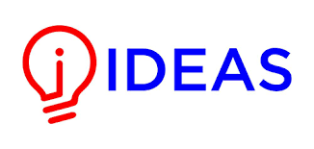A Large Language Model based Web Application for Contextual Document Conversation
A Large Language Model based Web Application for Contextual Document Conversation
Keywords:
Application Learning, Natural Language Processing, AI Bots, Large Learning model, Contextual Document ConversationAbstract
The emergence of LLMs, such as ChatGPT, Gemini, and Claude has ushered in a new era of natural language processing, enabling rich textual interactions with computers. However, despite the capabilities of these new language models, they face significant challenges when queried on recent information or private data not included in the model’s dataset. Retrieval Augmented Generation (RAG) overcame the problems mentioned earlier by augmenting user queries with relevant context from a user-provided document(s), thus grounding the model’s response to inaccurate source material. In research, RAG enables users to engage interactively with their documents, instead of manually reading through their document(s). Users provide their document(s) to the system, which is then converted into vector indices, and used to inject contextual information into the user prompt during retrieval. The augmented prompt then enables the language model to contextually answer user queries. The research is composed of a web application, with an intuitive interface for interacting with the LIama 3.2 1B, an open-source LLM. Users can upload their document(s) and chat with the LLM in the context of their uploaded document(s).
References
F. Farhi, R. Jeljeli, I. Aburezeq, F. F. Dweikat, S. A. Al-shami, and R. Slamene, “Analyzing the students’ views, concerns, and perceived ethics about chat GPT usage,” Comput. Educ. Artif. Intell., vol. 5, no. June, p. 100180, 2023, doi: 10.1016/j.caeai.2023.100180.
I. Adeshola and A. P. Adepoju, “The opportunities and challenges of ChatGPT in education,” Interact. Learn. Environ., pp. 1–14, 2023, doi: 10.1080/10494820.2023.2253858.
O. Zawacki-Richter, V. I. Marín, M. Bond, and F. Gouverneur, “Systematic review of research on artificial intelligence applications in higher education – where are the educators?,” Int. J. Educ. Technol. High. Educ., vol. 16, no. 1, 2019, doi: 10.1186/s41239-019-0171-0.
T. Li, E. Reigh, P. He, and E. Adah Miller, “Can we and should we use artificial intelligence for formative assessment in science?,” J. Res. Sci. Teach., vol. 60, no. 6, pp. 1385–1389, 2023, doi: 10.1002/tea.21867.
G. Verma, T. Campbell, W. Melville, and B. Y. Park, “Navigating Opportunities and Challenges of Artificial Intelligence: ChatGPT and Generative Models in Science Teacher Education,” J. Sci. Teacher Educ., vol. 34, no. 8, pp. 793–798, 2023, doi: 10.1080/1046560X.2023.2263251.
M. Al-Emran, “Unleashing the role of ChatGPT in Metaverse learning environments: opportunities, challenges, and future research agendas,” Interact. Learn. Environ., vol. 0, no. 0, pp. 1–10, 2024, doi: 10.1080/10494820.2024.2324326.
Y. Mao et al., “A Survey on LoRA of Large Language Models,” pp. 1–140, 2024, [Online]. Available: http://arxiv.org/abs/2407.11046
Y. Gao et al., “Retrieval-Augmented Generation for Large Language Models: A Survey,” pp. 1–21, 2023, [Online]. Available: http://arxiv.org/abs/2312.10997
P. P. Ray, “ChatGPT: A comprehensive review on background, applications, key challenges, bias, ethics, limitations and future scope,” Internet Things Cyber-Physical Syst., vol. 3, no. April, pp. 121–154, 2023, doi: 10.1016/j.iotcps.2023.04.003.
J. Zhou, P. Ke, X. Qiu, M. Huang, and J. Zhang, “ChatGPT: potential, prospects, and limitations,” Front. Inf. Technol. Electron. Eng., vol. 25, no. 1, pp. 6–11, 2024, doi: 10.1631/FITEE.2300089.
Z. Ahmad, W. Kaiser, and S. Rahim, “Hallucinations in ChatGPT: An Unreliable Tool for Learning,” Rupkatha J. Interdiscip. Stud. Humanit., vol. 15, no. 4, 2023, doi: 10.21659/rupkatha.v15n4.17.
J. M. Prieto-Andreu and A. Labisa-Palmeira, “Quick Review of Pedagogical Experiences Using Gpt-3 in Education,” J. Technol. Sci. Educ., vol. 14, no. 2, pp. 633–647, 2024, doi: 10.3926/jotse.2111.
Z. Xie, X. Evangelopoulos, Ö. H. Omar, A. Troisi, A. I. Cooper, and L. Chen, “Fine-tuning GPT-3 for machine learning electronic and functional properties of organic molecules,” Chem. Sci., vol. 15, no. 2, pp. 500–510, 2023, doi: 10.1039/d3sc04610a.
M. Enis and M. Hopkins, “From LLM to NMT: Advancing Low-Resource Machine Translation with Claude,” 2024, [Online]. Available: https://arxiv.org/abs/2404.13813v1
L. Caruccio, S. Cirillo, G. Polese, G. Solimando, S. Sundaramurthy, and G. Tortora, “Claude 2.0 large language model: Tackling a real-world classification problem with a new iterative prompt engineering approach,” Intell. Syst. with Appl., vol. 21, no. August 2023, p. 200336, 2024, doi: 10.1016/j.iswa.2024.200336.
X. Wang et al., “Searching for Best Practices in Retrieval-Augmented Generation,” pp. 17716–17736, 2024, [Online]. Available: http://arxiv.org/abs/2407.01219
E. Kasneci et al., “ChatGPT for good? On opportunities and challenges of large language models for education,” Learn. Individ. Differ., vol. 103, pp. 1–13, 2023, doi: 10.1016/j.lindif.2023.102274.
Y. Mao et al., “Generation-augmented retrieval for open-domain question answering,” ACL-IJCNLP 2021 - 59th Annu. Meet. Assoc. Comput. Linguist. 11th Int. Jt. Conf. Nat. Lang. Process. Proc. Conf., pp. 4089–4100, 2021, doi: 10.18653/v1/2021.acl-long.316.
R. Zhao et al., “Retrieving Multimodal Information for Augmented Generation: A Survey,” Find. Assoc. Comput. Linguist. EMNLP 2023, pp. 4736–4756, 2023, doi: 10.18653/v1/2023.findings-emnlp.314.

Downloads
Published
How to Cite
Issue
Section
License
Copyright (c) 2024 50SEA

This work is licensed under a Creative Commons Attribution 4.0 International License.




















